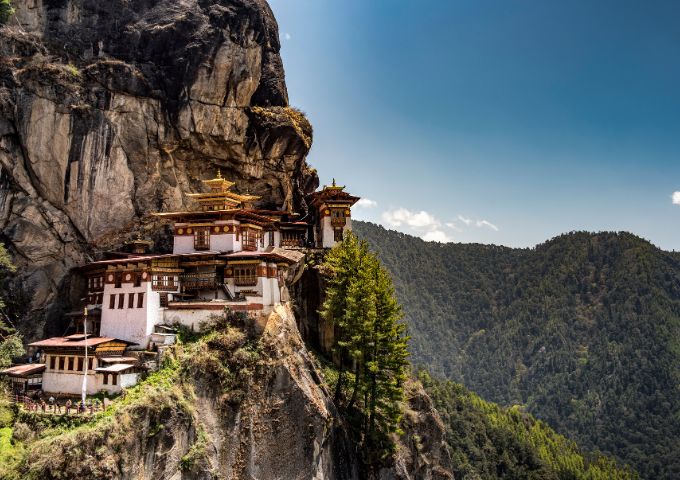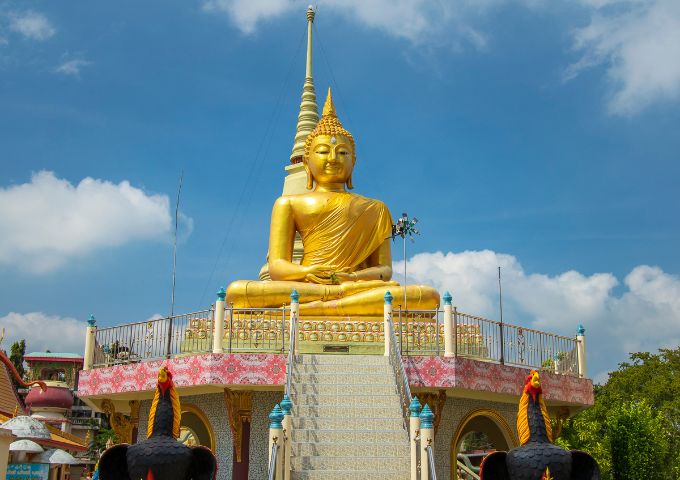Find serenity and peace! Discover the top 5 most breathtaking Buddhist temples to visit in Asia. Marvel at stunning architecture, vibrant artwork, and spiritual energy, and experience the rich cultural heritage of Buddhism in these incredible temples.
The grandeur of beauty can be seen in the perfect integration of art and architecture as displayed in the places of worship in Asia. When it comes to incredible attractions, Asian Buddhist temples stand out. The entire scale of the monument wears spirituality adorned with thousands of sparkling jewels illustrating its depth and significance. With over 28,000 in the world, the following are the top 5 best temples in Asia.
1. Shwedagon Pagoda, Myanmar

One of the leading Buddhist holy places, it has great historical significance and represents their culture beautifully. Things get even more attractive with the sectarian which becomes apparent at the time of sunset, offering an incredible view. Not only devoted hands come to this picture, but many tourists are eager to understand its essence and atmosphere as well.
2. Borobudur, Indonesia

A true gem of architectural and cultural beauty is the Borobudur temple in Indonesia, which is known to be the largest Buddhist temple in the world. Built in the 9th century, this temple located near Yogyakarta on the island of Java is a UNESCO World Heritage site and one of the popular places in the Asian region for Buddhist devotees. Borobudur consists of nine stacked platforms (stupas) that contain more than 2,500 and over five hundred Buddha sculptures, which depict the teaching of Buddhism. The temple, represented as a mandala, encompasses the Buddhist view of the cosmos. It’s a great place to delve into the rich history and philosophy of Buddhism.
3. Tiger’s Nest Monastery, also known as Paro Taktsang, Bhutan

Overhanging an exhilarating precipice in the Paro Valley in Bhutan, Tiger’s Nest, also referred to as Paro Taktsang, is an amazing Buddhist shrine that is of great psychological significance. It is a hero of this holy monastery who is suggested to have flown over this place on a tiger and raged that it was the perfect location for meditation, Guru Rinpoche – founder of Tibetan Buddhism. The monastery itself commands magnificent views over the mountains and valleys around it. Its detailed designs, as well as the history and significance of the culture said to have built it, have made it impossible to miss Tiger’s Nest Monastery if you are planning to tour the continent.
4. Wat Rong Khun (White Temple), Thailand

The White Temple (Wat Rong Khun) in Chiang Rai, Thailand, can be regarded as one of the most recent additions to Asian Buddhist temples and certainly one of the most beautifully constructed in terms of architecture. Wat Rong Khun temple was built by a Thai artist Chalermchai Kositpipat. This temple has a white exterior that features glass and elaborate designs, which is a contemporary interpretation of this architectural form. Mural paintings that combine the Buddhist perspective with that of popular culture: superheroes and film stars, can be found inside. It is clear that the initial concept of the artist was finished off with even more sophistication. Wat Rong Khun is a perfect blend of the old and the new.
5. Todai-ji, Japan
Evidence of significant historical events and the functions of the predominant Buddhist temples in Asia can be found in Todai-ji in Nara, Japan. This temple that contains the world’s largest bronze statue of the Buddha Vairocana (Daibutsu) is ancient and an architectural masterpiece. The Great Buddha Hall, or Daibutsuden, is one of the largest wooden buildings globally, housing this enormous statue. Tourists and devotees of Buddhism view the religious site with trepidation. Todai-ji has a unique, captivating atmosphere – the temple is smooth and expansive. It’s a wonderful place to see Japan’s Buddhist heritage in all its depth.
These five temples located in Asia are more than just architectural masterpieces. Rather, they are places of worship and education about Buddhist culture and philosophy. Each temple is unique in its own way, so is Shwedagon Pagoda with its quiet beauty and Borobudur Temple with its majestic splendour. By going to such temples, tourists not only appreciate the architectural and artistic aspects of these places but also comprehend the historical evolution and the teachings of Buddhism.

